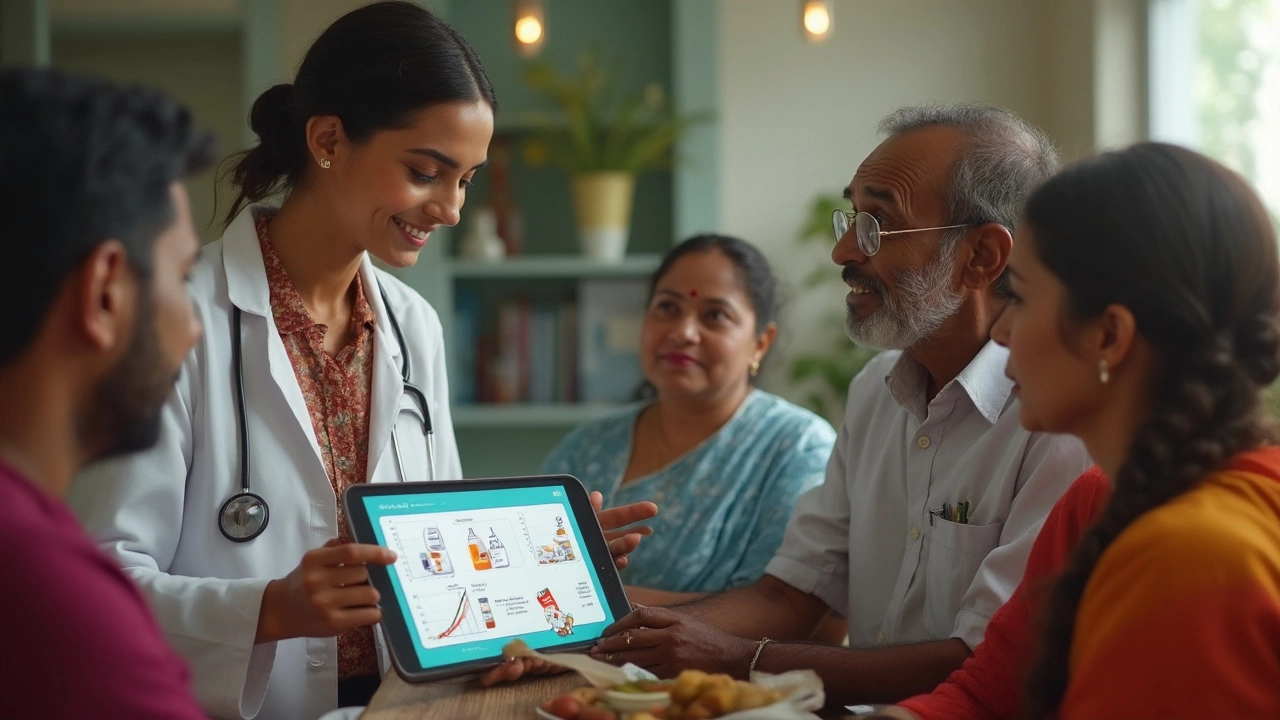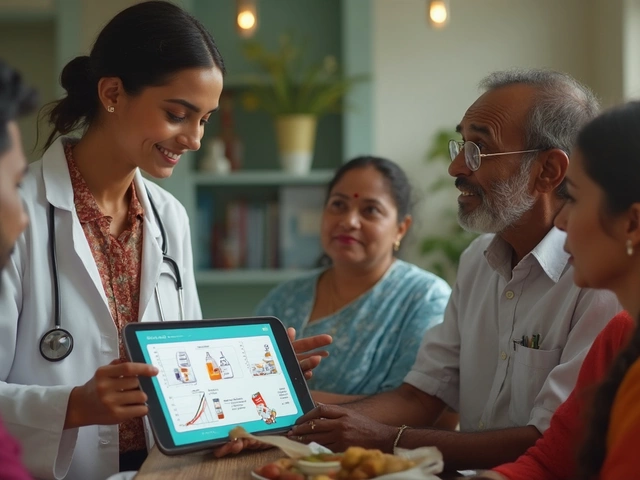Metformin is everywhere—almost every second person I know with type 2 diabetes in Bangalore started out on it. It’s like the entryway drug for blood sugar problems. But let’s be honest: it’s far from perfect for everyone. Some just don’t tolerate it, with side effects like stomach upset, constant trips to the bathroom, or even scary stuff like lactic acidosis cropping up in rare cases. Sometimes, it just leaves you hanging, not giving you the control you want. And you hear things in waiting rooms—someone’s been told to stop because of kidney numbers, or someone else just can’t stand the taste. If you’re in that spot—ready to break up with metformin, or maybe your doctor has already done it for you—where do you go next? What’s actually a better choice? Let’s dig in, no sugarcoating (pun absolutely intended).
Why Look Beyond Metformin?
Here’s the reality: as helpful as metformin is, it has its dealbreakers. For starters, a lot of people—almost one in five—get stomach issues. It isn’t always gentle on your system. You might get bloating, diarrhea, or nausea that refuses to go away. Then there’s the issue of vitamin B12 deficiency, which can sneak up after years on the drug. For older folks or anyone with dodgy kidneys, the risk of lactic acidosis, as rare as it is, is enough to make you think twice.
Plus, maybe your blood sugar just won’t budge. Metformin works okay for mild to moderate cases, but if your sugar levels need more than a gentle nudge, you’ll probably need something stronger or different. Some people also value losing weight from their diabetes medication, and metformin is pretty neutral there. There’s increasing interest in drugs that do a double act—lowering blood sugar and trimming off the kilos for you.
Doctors don’t hand out the same prescription for every person anymore. They look at your risk factors, how your organs are doing, what your priorities are—avoiding hypos, losing weight, fixing cholesterol, even protecting your heart or kidneys down the road. The newest guidelines from the ADA are all about personalising your plan. If metformin isn’t perfect for you, you aren’t stuck. There are several *metformin alternatives* that could match your needs, sometimes even offering extra benefits you never expected.
One study published in "The Lancet" in February 2024 highlighted that up to 30% of newly diagnosed type 2 diabetes patients in Asia switched off metformin within their first year—either due to tolerability or because the results just weren’t there. So if you’ve been thinking—"Is there something better out there for me?"—that’s not just you. That’s a real pattern, and you deserve to know what’s next on the menu.
The Heavy-Hitters: GLP-1 Receptor Agonists
Step aside, ancient history—GLP-1 receptor agonists are now making waves. The names are popping up in every newspaper: semaglutide (Ozempic/Wegovy), liraglutide (Victoza/Saxenda), dulaglutide (Trulicity), and a few more in this modern class. These meds don’t just lower blood sugar—they actively help you lose weight. If you’re after a diabetes fix that also tackles your waistline, it’s hard to beat them. That’s why people in Bangalore and across India are asking about these drugs in record numbers. Ads have cropped up on social media. Suddenly, injectable pens are becoming as common as inhalers were a decade ago.
How do they work? GLP-1 agonists mimic a gut hormone that signals "I’m full" to your brain, so you end up eating less. Meanwhile, they help your pancreas release insulin when you need it, and chill out your liver so it stops dumping extra sugar into your blood. Lower A1c, less risk of heart attack, slimmer you—a pretty powerful combo. According to a major 2023 trial (published in the "New England Journal of Medicine"), patients taking weekly semaglutide dropped an average of 8kg in a year, with a significant reduction in their A1c too. That’s rare in the diabetes world.
The catch? They’re injectable, which puts some people off, but the needles are tiny and most people get used to them quickly. You might get nausea as your gut adjusts, especially in the first few weeks. Most importantly, the price can sting—these meds are still relatively expensive in India, though they’re slowly coming down. For many, the benefits outweigh the inconveniences.
There’s even a quote making the rounds from Dr. Ambrish Mithal, a top endocrinologist at Max Healthcare:
“With GLP-1 agonists, we now have the first real chance to combine blood sugar control, weight loss, and heart protection in one class of medicine.”That’s a strong endorsement, and that’s why the conversation around diabetes is changing so fast.
SGLT2 Inhibitors: Kidney and Heart Friendly
Maybe you’re not keen on injections. SGLT2 inhibitors are a mouthful to say but easy to take—they’re pills, like metformin. The popular names are dapagliflozin (Forxiga), empagliflozin (Jardiance), and canagliflozin (Invokana). They work in your kidneys, making them filter out excess sugar into your urine. Your body literally pees out the extra glucose. Sounds odd, but it’s surprisingly effective. People taking SGLT2 inhibitors regularly report weight loss and even a drop in blood pressure—unexpected bonuses for a diabetes pill.
These drugs stand out for protecting your heart and kidneys, especially if you’ve already got a bit of trouble in those departments—a common scenario for people who’ve had diabetes for a while. There’s something reassuring about a drug that does more than just sugar-lowering. The EMPA-REG OUTCOME trial, which started the SGLT2 revolution, showed that empagliflozin could actually reduce deaths from heart disease in diabetics. That’s no small feat, and it’s why newer guidelines now recommend SGLT2 inhibitors even for people without super-high blood sugars if they’ve got heart issues.
Side effects? The main worry is infections down there—urinary tract or genital yeast infections—because your urine is now sugar-rich. Rarely, people can get dehydration or a form of ketoacidosis (more of a risk if you’re fasting or on a very low-carb diet). Drinking plenty of water and keeping up basic hygiene usually keeps things under control. SGLT2 inhibitors aren’t a green light for everyone—talk to your doc if you have kidney disease or are prone to multiple infections. But if you want a safe, oral option with extra heart and kidney protection, they’re worth a serious look.

DPP-4 Inhibitors, Sulfonylureas & Other Picks
Not everyone wants—or needs—the flashiest new drug. Sometimes, you want something tried-and-tested, maybe with fewer side effects. DPP-4 inhibitors are steady, reliable options for a lot of folks. Names like sitagliptin (Januvia), linagliptin (Trajenta), or vildagliptin (Galvus) turn up regularly in prescriptions here. These pills boost your own insulin response without causing weight gain or low blood sugar most of the time. They aren’t as dramatic as GLP-1 agonists—think of them as steady friends rather than rock stars. But for mild-to-moderate diabetes, especially if you’re older or on a fixed income, they get the job done quietly.
On the other hand, sulfonylureas—medicines like glimepiride and gliclazide—are among the oldest diabetes drugs, and they work fast. These push your pancreas to pump out more insulin. They’re cheap, available everywhere in India, and have been around for decades. But the catch is a higher risk of hypoglycemia (sudden drops in blood sugar), so you need to be a bit more careful, especially if you’re older, eat irregularly, or have kidney issues. For someone with tight finances, though, they’re often the only alternative to metformin besides lifestyle changes.
Thiazolidinediones—pioglitazone is the one you’ll see most—are less popular these days because of concerns around heart failure and fluid retention. They might be considered in special situations, but most doctors prefer to try other classes first.
Non-Medication Solutions: Diet, Exercise, and Modern Indian Life
Here’s something a lot of us in Bangalore forget in the rush for the latest pill—sometimes, the best alternative to metformin isn’t another medicine at all. For mild or early diabetes, many see big results just from changing what they eat and how much they move. Simple swaps, like cutting out sugar-loaded chai, switching from white rice to millets, or adding a 30-minute walk to the evening schedule, can drop your average blood sugars by a shocking margin. The DiRECT study from the UK found over 45% of people with recent diabetes sent their sugars back to normal with an aggressive lifestyle revamp—no pills needed. That’s mind-blowing.
It almost sounds like a cliché, but family meals—homemade dal, sabzi, roti—are still better than takeout or packaged junk food. There’s no shortcut here: Portion control, fewer fried snacks, and more greens work. Even modest weight loss—like 4-5 kg—can make your body’s own insulin work better. For exercise, you don’t need a gym membership. A brisk walk on the streets, making it a habit with friends or family, does the trick. The key is doing it every day, rain or shine. For anyone who wants to avoid medication entirely, it’s doable, but you need patience, consistency, and the support of whoever does the cooking at home.
You’ll also want to keep an eye on stress—it actually drives up blood sugar. A lot of Bangaloreans are working long hours in tech jobs or business, dealing with traffic snarls, and deadlines. Even small things—practising yoga, deep breathing for a few minutes, unplugging your phone before dinner—help your sugar numbers more than you’d expect.
- Cut out sugary drinks, including that midday nimbu paani with extra sugar.
- Switch to whole grains over white rice or white bread.
- Find physical activity you like—biking, swimming, badminton, anything.
- Check your sugar at home, and keep a food diary for a week to spot hidden sugar bombs.
- Push for family involvement—a support system makes it ten times easier.
Truth is, if you can get by on lifestyle changes, you might never need a refill of any diabetes drug—metformin or anything else. But don’t feel bad if you need medication. The aim is steady, long-term control, not short-term heroics.
Finding Your Fit: Personalizing Diabetes Treatment
There’s no one-size-fits-all answer. What’s a "better" choice than metformin? The boring (but true) answer is: it depends on you. Your age, your other health issues, your goals, what you can afford, and—let’s not forget—what you can actually stick to. For someone keen on weight loss and willing to use a pen, GLP-1 receptor agonists might be gold. For a person struggling with heart or kidney disease, SGLT2 inhibitors could be a game-changer. If money’s tight but you need something, sulfonylureas still have a role. And sometimes, doubling down on food and exercise routines works better than adding a second medicine.
If you’re considering a change, talk to your doctor openly. Share side effects you’re experiencing—even the embarrassing ones. Ask about newer drugs, and don’t be put off by their names or how they’re administered. In some government hospitals and bigger insurance plans, these newer options are starting to become available, at least for those who need them most.
Don’t forget health checks: Eyes, feet, kidneys, cholesterol testing—these give you and your doctor a bigger picture than any one blood sugar test. Aim for a yearly vision and kidney check, even if your numbers look great. And if you’re ever unsure about a side effect or struggling with the cost, plenty of others are having the same conversations.
New drugs, new approaches, and better data are changing what’s possible in type 2 diabetes. Today, you’ve got tools to control the disease on your own terms—whether that’s a new medicine, a food swap, or lacing up your shoes for a walk after dinner. Stay curious and keep asking questions—the science is changing fast, and the next best answer could be right around the corner.






